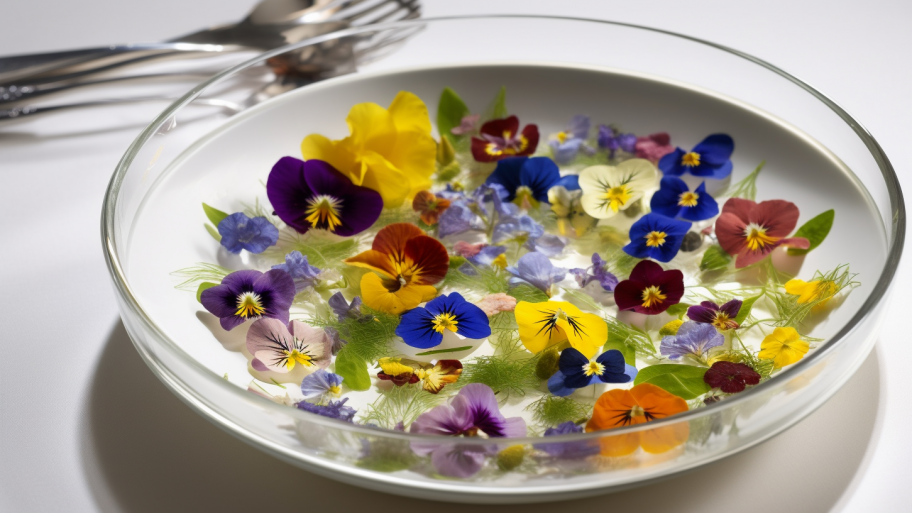Congratulations on successfully cultivating and nurturing your medicinal plant garden! With a bounty of potent, healing herbs at your fingertips, it’s time to learn how to transform your harvest into effective, natural remedies. In this final article of our series, we’ll guide you through the essential steps of preparing and storing your herbal harvest, as well as creating infusions, tinctures, and salves. So let’s embark on this exciting journey and discover how to unleash the healing secrets of your medicinal garden!
Section 1: Drying and Storing Medicinal Herbs for Optimal Potency
Properly drying and storing your herbs is crucial to preserving their medicinal properties. Follow these guidelines to ensure your remedies remain potent and effective:
- Drying: To dry your herbs, tie small bundles of stems together and hang them upside-down in a well-ventilated, dark space. Alternatively, you can place the herbs on drying screens or racks. Avoid direct sunlight, as it can degrade the essential oils and medicinal compounds.
- Storing: Once your herbs are completely dry, remove the leaves and flowers from the stems and store them in airtight containers, such as glass jars. Label the containers with the herb name and date of storage. Keep your stored herbs in a cool, dark place, away from direct sunlight and moisture.
Section 2: Making Herbal Infusions, Tinctures, and Salves
With your herbs properly dried and stored, you can now create a variety of natural remedies. Here are some basic methods for preparing herbal infusions, tinctures, and salves:
- Herbal Infusions: Infusions are made by steeping herbs in hot water, much like making tea. To make an infusion, place 1-2 teaspoons of dried herbs in a teapot or heatproof container, pour 1 cup of boiling water over the herbs, and let steep for 10-15 minutes. Strain and enjoy! Infusions can be used to treat a variety of ailments, such as digestive issues, colds, and anxiety.
- Tinctures: A tincture is a concentrated liquid extract made by steeping herbs in alcohol, such as vodka or brandy. To make a tincture, fill a glass jar halfway with dried herbs, then top with alcohol until the herbs are completely covered. Seal the jar and store it in a cool, dark place for 4-6 weeks, shaking it daily. After the steeping period, strain the mixture and store the tincture in a dark glass dropper bottle.
- Salves: Herbal salves are made by infusing herbs in oil, then mixing the infused oil with beeswax to create a solid, spreadable product. To make a salve, gently heat 1 cup of dried herbs with 1 cup of carrier oil (such as olive or coconut oil) in a double boiler for 1-2 hours. Strain the oil, then add 1/4 cup of grated beeswax and heat until the beeswax melts. Pour the mixture into tins or jars and let it cool and harden.
Before diving into the world of homemade remedies, consider investing in some essential tools and supplies. Here are a few highly-rated products on Amazon that can help you get started:
- Herb Drying Rack: A collapsible, multi-tiered drying rack for efficiently drying your herbal harvest.
- Amber Glass Dropper Bottles: These bottles are perfect for storing and dispensing your homemade tinctures.
- Double Boiler: A double boiler is an essential tool for gently heating your herbal oils and melting beeswax when making salves.
- Beeswax: Choose high-quality, pure beeswax to create smooth, natural salves that soothe and protect the skin.
- The Emerald Planet: How plants changed Earth’s History: This enlightening read delves into the intricate relationship between medicinal plants and our ancestral health practices.
In conclusion, growing, tending, and utilizing your own medicinal plant garden is a powerful way to connect with nature and embrace its healing gifts. From selecting and nurturing your plants to transforming your harvest into potent remedies, you’ve gained invaluable skills that will serve you and your loved ones for years to come. As you continue to explore the world of herbal medicine and expand your knowledge, you’ll unlock even more of nature’s healing secrets and enhance your well-being in ways you never thought possible.
But the wonders of the plant world don’t end with medicinal gardening! Immerse yourself in the captivating realm of tea gardening, a unique form of horticultural art that combines plants and passion to create breathtaking homegrown tea experiences. Be sure to dive into our next article series, “Sip Your Way to Bliss: Craft a Stunning Homegrown Tea Garden,” where we’ll guide you through the fascinating process of designing, planting, and maintaining your very own tea garden sanctuary. So, here’s to a lifetime of vibrant health, natural healing, and the unparalleled joy of exploring the endless possibilities of the botanical world!




